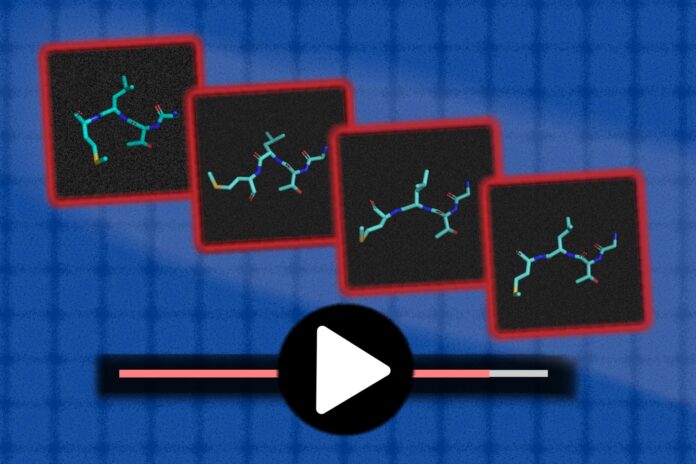Introduction to MDGen
The capabilities of generative AI models have grown significantly, allowing them to transform simple text prompts into hyperrealistic images and even extended video clips. Recently, generative AI has shown potential in helping chemists and biologists explore static molecules, such as proteins and DNA. However, molecules are constantly moving and jiggling, which is important to model when constructing new proteins and drugs.
The Challenge of Molecular Dynamics
Simulating these motions on a computer using physics, a technique known as molecular dynamics, can be very expensive, requiring billions of time steps on supercomputers. To address this challenge, researchers at the MIT Computer Science and Artificial Intelligence Laboratory (CSAIL) and Department of Mathematics have developed a generative model that learns from prior data.
What is MDGen?
The team’s system, called MDGen, can take a frame of a 3D molecule and simulate what will happen next, like a video. It can connect separate stills, fill in missing frames, and even simulate frames within frames. By "hitting the play button" on molecules, MDGen could potentially help chemists design new molecules and closely study how well their drug prototypes for cancer and other diseases would interact with the molecular structure it intends to impact.
How MDGen Works
MDGen represents a paradigm shift from previous comparable works with generative AI, enabling much broader use cases. Unlike previous approaches, which relied on the previous still frame to build the next, MDGen generates frames in parallel with diffusion. This means MDGen can be used to connect frames at the endpoints, "upsample" a low frame-rate trajectory, and press play on the initial frame.
Experiments and Results
In experiments, the researchers found that MDGen’s simulations were similar to running the physical simulations directly, while producing trajectories 10 to 100 times faster. The team tested their model’s ability to take in a 3D frame of a molecule and generate the next 100 nanoseconds. MDGen was able to compete with the accuracy of a baseline model, while completing the video generation process in roughly a minute, a fraction of the three hours it took the baseline model to simulate the same dynamic.
Potential Applications
MDGen’s capabilities also include simulating frames within frames, "upsampling" the steps between each nanosecond to capture faster molecular phenomena more adequately. It can even "inpaint" structures of molecules, restoring information about them that was removed. These features could eventually be used by researchers to design proteins based on a specification of how different parts of the molecule should move.
Future Directions
The researchers aim to scale MDGen from modeling molecules to predicting how proteins will change over time. To enhance MDGen’s predictive capabilities, they will need to build on the current architecture and data available. They hope to develop a separate machine-learning method that can speed up the data collection process for their model.
Conclusion
MDGen presents an encouraging path forward in modeling molecular changes invisible to the naked eye. Chemists could use these simulations to delve deeper into the behavior of medicine prototypes for diseases like cancer or tuberculosis. The researchers believe that MDGen is an early sign of progress toward generating molecular dynamics more efficiently, and they are excited to share their early models in this direction. With further development, MDGen has the potential to revolutionize the field of molecular dynamics and accelerate the discovery of new drugs and treatments.

